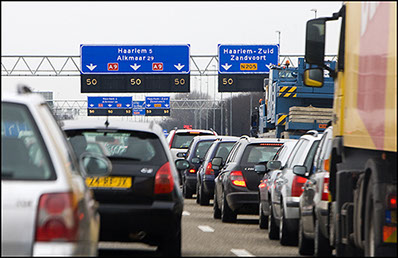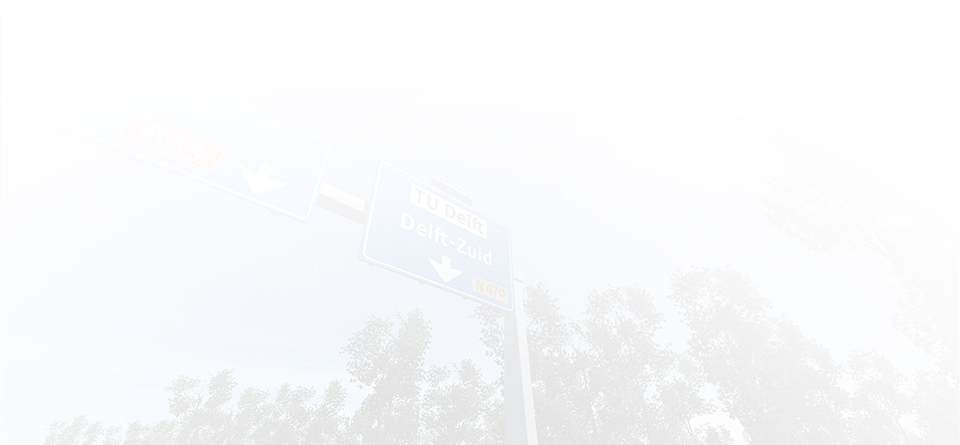

Traffic jams and travel delays are a large problem still plaguing road users in the Netherlands. It is estimated that the yearly costs associated with this can go as high as 1.8 billion Euro’s on an annual basis.
One solution is to expand the infrastructure, but this is not always possible, desirable or effective. There are situations where the infrastructure has not reached its theoretical throughput limit, but experiences frequent traffic jams anyway. Unbalanced lane use, situations where one lane is much busier than neighbouring lanes, can be a cause. Unbalanced lane use reduces the capacity of motorways to absorb disturbances: a single lane change can trigger the onset of congestion in one of the lanes, which then spreads to the other lanes.
Solving this problem will require active traffic control on the lane-level. We will need to be able to detect situations of unbalanced lane use and determine the best way to solve them, be able to request changes of lane for individual drivers and be able to identify the exact lane on which a given car is driving so that the appropriate requests can be formulated.


Taking the Fast Lane: Lane Specific Traffic Control
Principal Investigator
PostDoc Researchers
PhD Researchers
Supervisors
Instrumented Vehicles
To tackle this problem, TU Delft collaborates with STW, Rijkswaterstaat, SWOV and several partners from the industry. We work on developing a system that will provide lane-specific advice to individual drivers when this is needed to stabilise traffic flows. In order to achieve this goal, we need to develop:
• a lane specific traffic state estimation and control model;
• a persuasive driver interface to optimize the compliance of the driver to lane specific advices;
• a vehicle positioning system at the lane level.
To estimate traffic conditions and identify situations where traffic jams might start forming, we will develop an innovative flow model. This will use speed, traffic volume and occupancy measurements from inductive loop detectors per lane, as well as so-called floating car data such as speed and position reported by smart in-car systems. Read more.
To get the message to the driver, we use a persuasive interface to optimise behavioural outcomes, taking into account anticipated benefits, driver workload and local conditions. The persuasive lane advise uses a driver workload estimator and will consider visual signals (display, heads-up-display, head-mounted holographic display), auditory signals and haptic signals (active steering) to optimize driver behavioural outcomes. Read more.
Determining on which lane a car is driving is crucial, without this we cannot give accurate control signals to the driver. The lane level positioning of cars will be achieved through innovative Global Navigation Satellite System (GNSS) Single Frequency Precise Point Positioning, a new technique to increase GPS accuracy substantially using prediction of satellite orbits and atmospheric conditions. Read more.



